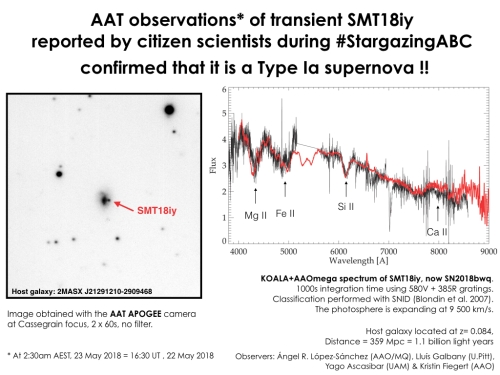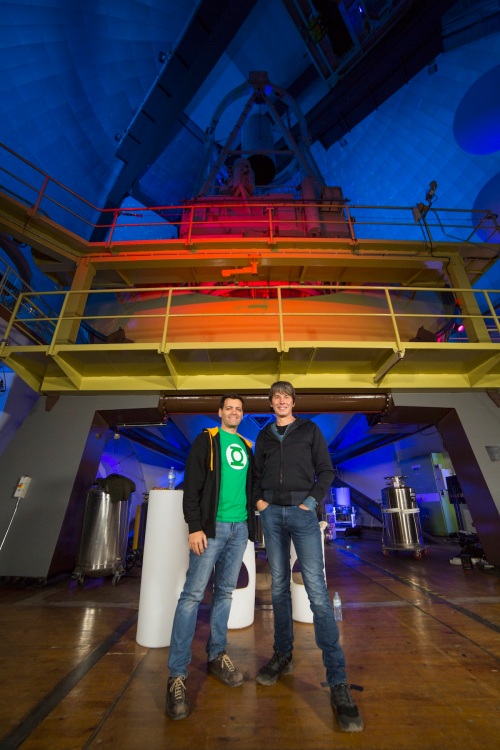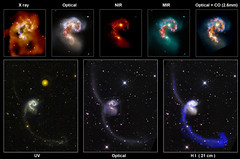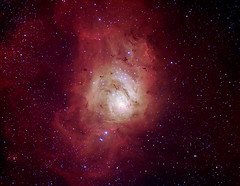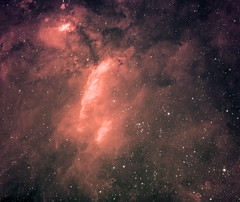Since the beginning of 2016 I collaborate with SBS Radio Australia en español (SBS Radio Australia in Spanish) with a section about Astronomy. The idea came from the journalist Anna Sagristà who, after interviewing me for the section “Latinos in Australia” (*), invited me to have an informal conversation of ten minutes about some Astronomy facts of interesting news.
That was the birth of “Astronomía para Principiantes” (Astronomy for Beginners), a monthly section on SBS Radio Australia in Spanish, that I also upload as a podcast in iVoox.
It is redundant to say that this podcast is in Spanish, but it is conducted in Australia, and that is why I think it is convenient I talk about it in this blog, as one of the many science communication activities I do in this country.
With the return of Anna to Spain in mid-2016, it is my friend the journalist Rocío Otoya who has been conducting the section.
Astronomy for Beginners is usually released on the last Sunday of every month.
The most recent episode (number 31) was aired on Sunday, 31st March 2019 and it was dedicated to the Milky Way and its “weight”. However, on my iVoox channel I have uploaded so far only to Episode 23 (ApP23: The Blue Blood Supermoon, January 28, 2018). I’ll be uploading the rest of episodes during the next weeks.
Besides publicizing this science communication podcast in Australia, I’m compiling here the list with all the episodes of “Astronomía para Principiantes” that are published in iVoox:
- ApP01: ¿Nuevo planeta en el Sistema Solar?, 9 de febrero de 2016
- ApP-E03: La detección de ondas gravitacionales nos permite ‘oir’ el Universo, 7 de febrero de 2016
- ApP02: ¿Cuánto tardaría un agujero negro en comerse el sistema solar?, 13 de marzo de 2016
- ApP03: “El Big Bang creó el tiempo y el espacio a la vez”, 24 de abril de 2016
- ApP04: ¿Qué es la materia?, 22 mayo de 2016
- ApP05: ¿Qué nos pasará cuando el Sol muera?, 26 de junio de 2016
- ApP06: La pérdida de la oscuridad del cielo, 31 de julio de 2016
- ApP07: Un exoplaneta cercano muy parecido a la Tierra, 25 de septiembre de 2016
- ApP08: El fin de Rosetta, 30 de octubre de 2016
- ApP09: El Universo bajo la mirada cosmológica, 27 de noviembre de 2016
- ApP10: La historia de nuestro calendario, 25 de diciembre de 2016
- ApP11: El Legado de Vera Rubin, 29 de enero de 2017
- ApP12: Supernovas y exoplanetas de TRAPPIST-1, 26 de febrero de 2017
- ApP13: Las escalas del Universo, 27 de marzo de 2017
- ApP14: El momento perfecto para ver a Júpiter, 30 de abril de 2017
- ApP15: La luz del Universo alumbra al Festival Vivid, 28 de mayo de 2017
- ApP16: Saturno muestra sus colores verdaderos, 27 de junio de 2017
- ApP17: La ciencia ciudadana, una gran ayuda para la astronomía, 30 de julio de 2017
- ApP18: Los eclipses de sol, 27 de agosto de 2017
- ApP19: Cuando los asteroides parecen cometas, 23 de septiembre de 2017
- ApP20: El Observatorio Astronómico Australiano, 29 de octubre de 2017
- ApP21: Asteroide interestelar, 26 de noviembre de 2017
- ApP22: La estrella de Belén a los ojos de la Astronomía , 24 de diciembre de 2017
- ApP23: La superluna de sangre azul, 28 de enero de 2018
- ApP24: El cuásar más distante, 25 de febrero de 2018
I added one of the “special episodes” on the first detection of gravitational waves, I should upload the other two that we recorded (one on “Estrella Cervantes” and the aforementioned interview on the SBS section “Latinos in Australia”).
I will update this entry when I publish new episodes.
I hope you like it! Some English-speakers have told me they use it for practicing their Spanish, which is always a good thing!
(*) I am not responsible for the title given to this interview …








